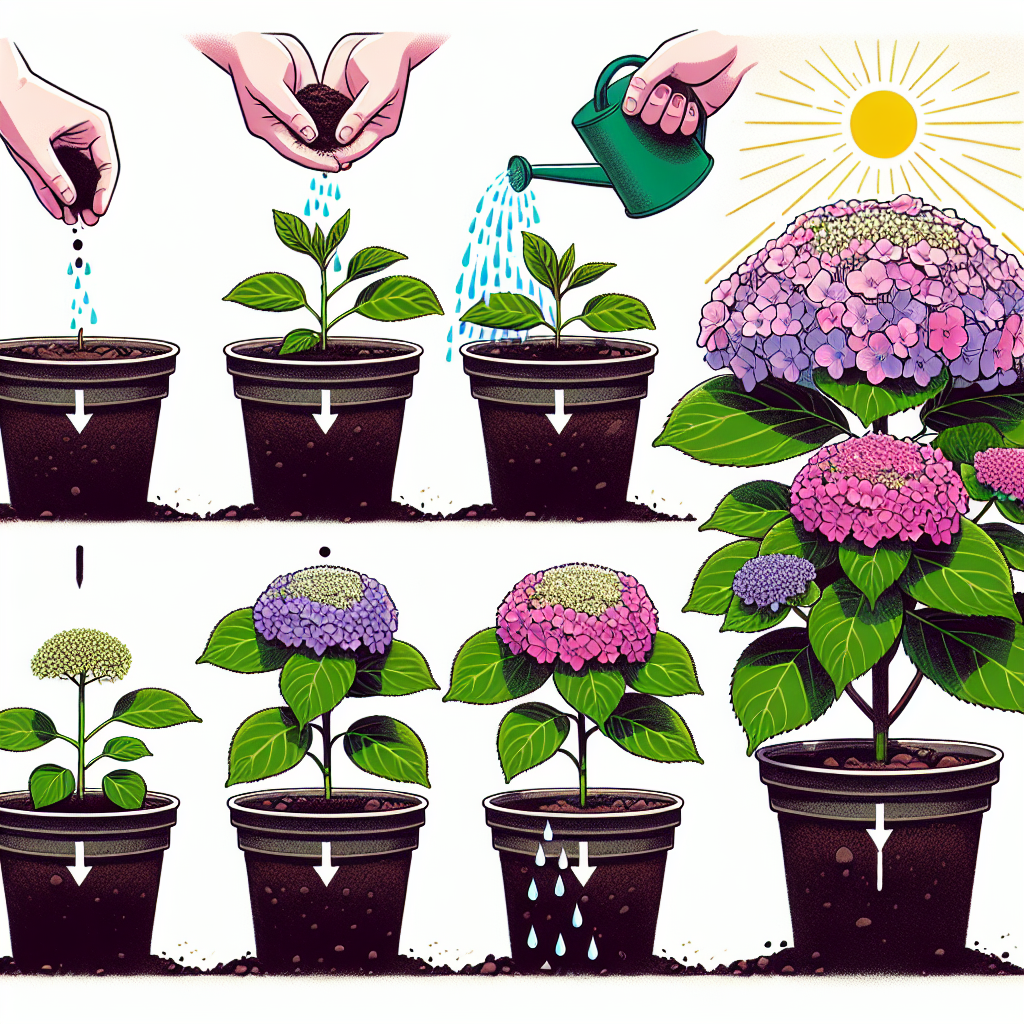
How to grow hydrangeas
How to Grow Hydrangeas: A Complete Guide
Hydrangeas are some of the most beloved flowering shrubs, cherished for their stunning blooms and versatility in gardens. If you're looking to enhance your outdoor space or simply want to learn how to nurture these beautiful plants, you're in the right place. This article will provide you with a comprehensive guide on everything you need to know about hydrangeas, ensuring you achieve a flourishing garden.
Understanding Hydrangeas
Before we dive into the specifics of growing hydrangeas, it's essential to understand what makes these plants unique. Hydrangeas belong to the genus *Hydrangea*, which consists of around 70 species, most of which are native to Asia and the Americas. They are admired for their large, showy flower heads that can range in color from blue to pink, white, and purple, depending on the species and soil conditions.
Choosing the Right Variety
When considering how to grow hydrangeas, one of the first steps is choosing the right variety for your garden. Here are a few popular types:
- Hydrangea macrophylla (Bigleaf Hydrangea) - Known for its large blooms and rounded shape, it is the most common type found in gardens.
- Hydrangea paniculata (Panicle Hydrangea) - Featuring cone-shaped flower clusters, this variety is hardy and blooms later in the summer.
- Hydrangea arborescens (Smooth Hydrangea) - Renowned for its round white flower heads, it is easy to grow and suitable for many climates.
- Hydrangea quercifolia (Oakleaf Hydrangea) - Recognizable by its oak-like leaves and large, fluffy flowers that transition to shades of pink in the fall.
Where to Plant Hydrangeas
Hydrangeas prefer certain conditions to thrive. Here are factors to consider when choosing the perfect spot in your garden:
- Sunlight: Most hydrangeas thrive in partial shade, ideally 4-6 hours of sunlight a day. However, some types, like *Hydrangea paniculata*, can tolerate full sun.
- Soil: Hydrangeas prefer well-draining, loamy soil rich in organic matter. They also appreciate a slightly acidic to neutral pH.
- Moisture: Regular watering is crucial, especially in the hottest months; however, avoid waterlogged soil.
Preparing the Soil
Preparation of the soil is a vital step in ensuring the success of your hydrangea plants. Follow these steps:
- Test the soil pH and amend it if necessary to suit your chosen hydrangea variety.
- Add organic compost or well-rotted manure to enrich the soil.
- Ensure good drainage by loosening compacted soil and mixing in sand or perlite if needed.
Planting Hydrangeas
Once you've chosen the right variety and prepared the soil, it’s time to plant your hydrangeas. Here's a step-by-step guide:
- Timing: Early spring or fall is the best time to plant hydrangeas.
- Spacing: Depending on the variety, ensure each plant is spaced appropriately, usually 3-10 feet apart.
- Digging the Hole: Dig a hole that is twice the width of the root ball and about the same depth.
- Positioning: Place the plant in the hole, ensuring the top of the root ball is level with the soil surface.
- Backfilling: Fill the hole with soil, gently tamping down as you go to eliminate air pockets.
- Watering: Give your newly planted hydrangeas a thorough watering to settle the soil.
Watering and Fertilizing
Effective care is crucial when learning how to grow hydrangeas. Here are tips on watering and fertilizing:
- Watering: Hydrangeas prefer consistent moisture. Water deeply once a week, or more frequently during hot, dry periods.
- Fertilizing: Fertilize in early spring with a balanced granular fertilizer specifically designed for flowering shrubs.
- Mulching: Apply a layer of mulch around the base to retain moisture and suppress weeds.
Pruning Hydrangeas
Pruning is essential for maintaining the health and shape of your hydrangeas. Different types of hydrangeas require different pruning methods:
- Hydrangea macrophylla: Prune right after flowering to promote growth for the next year.
- Hydrangea paniculata: These can be pruned in late winter or early spring.
- Hydrangea arborescens: Often pruned back to the ground in early spring for renewed growth.
- Hydrangea quercifolia: Prune after flowering to shape and maintain size.
Common Problems and Solutions
Like any plant, hydrangeas can face some common issues. Here’s a list of potential problems and their solutions:
- Pests: Watch for aphids, spider mites, and scale. Treat infestations with insecticidal soap or neem oil.
- Diseases: Look out for powdery mildew and root rot. Ensure good air circulation and proper watering techniques.
- Color Issues: The color of hydrangeas can differ based on soil pH. For blue flowers, aim for acidic soil; for pink, a more alkaline medium.
Winter Care for Hydrangeas
Preparing hydrangeas for winter is essential to ensure their survival in colder climates. Here’s how to winterize them:
- Mulching: Cover the base of the plants with a thick layer of mulch to insulate the roots.
- Pruning: Only prune dead or damaged branches during late winter; excessive pruning should be avoided before winter.
- Wrapping: In extremely cold areas, consider wrapping the plants with burlap to protect them from harsh winter winds.
Conclusion
Growing hydrangeas can be immensely rewarding, both for novice and experienced gardeners. With the right knowledge and care, you'll be rewarded with breathtaking blooms in your garden. As you embark on your hydrangea journey, remember the tips outlined in this guide for successful cultivation.
"Gardening adds years to your life and life to your years." - Unknown
By choosing the correct hydrangea variety, preparing the soil, planting correctly, and caring for your plants through watering, fertilizing, and pruning, you'll ensure that your garden thrives. Happy gardening!
By Guest, Published on September 20th, 2024